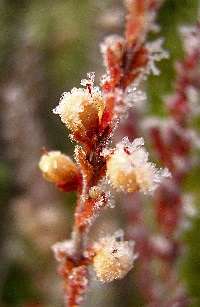Mapping the unknown: What is the function of non-coding RNA in plants?

DNA holds the blueprint for life. However, very little of the DNA in higher organisms are protein coding genes. For example, in humans only 3% of the DNA represents genes. The question is: what does the other 97% do? Curiously, most of what we know about genomic information is derived from studying the minority of the DNA that codes for proteins.
The majority of the DNA, which is turned into non-coding RNA, is as yet under-investigated. Therefor Postdoc Peter Kindgren from Copenhagen Plant Science Centre at University of Copenhagen has received a 2-year Marie Curie Individual Fellowship grant from EU to try to shed some light on the function of this non-coding RNA.
Plants have a sophisticated defense system
Together with his colleagues in the Marquardt lab at Copenhagen Plant Science Centre, Peter Kindgren studies, if non-coding RNA sequences are vital components in the complex regulation system in plants.
Plants do not have the option of flight as a response to different threats, e.g. changes in the environment or being eaten by insects. Instead they have developed a sophisticated compensatory regulation system to cope with the different challenges. Non-coding RNA could play an important role in this.
Temperature response is the focus of the particular project that Peter Kindgren will start to work on with the funding from Marie Curie. He explains:
"I am going to investigate the response of the model plant Arabidopsis thaliana to low temperatures. My aim is to analyze, if part of the non-coding RNA plays a role in the plant's adaptation to cold."
A long-term outcome of the research could be to make crop plants more resistant to temperature changes.
New technique for studying transcription
Developing a new technique to better understand what goes on during transcription of DNA into RNA in plants, will be an additional focus area.
"The new technique will allow us to actually see the dynamics of transcription as it takes place. We will be able to capture the non-coding RNA in great detail and before it is degraded. It is a brand new approach which will enable us to investigate the molecular events in the abundant but also still mysterious components of DNA," says Peter Kindgren.
Provided by University of Copenhagen




















